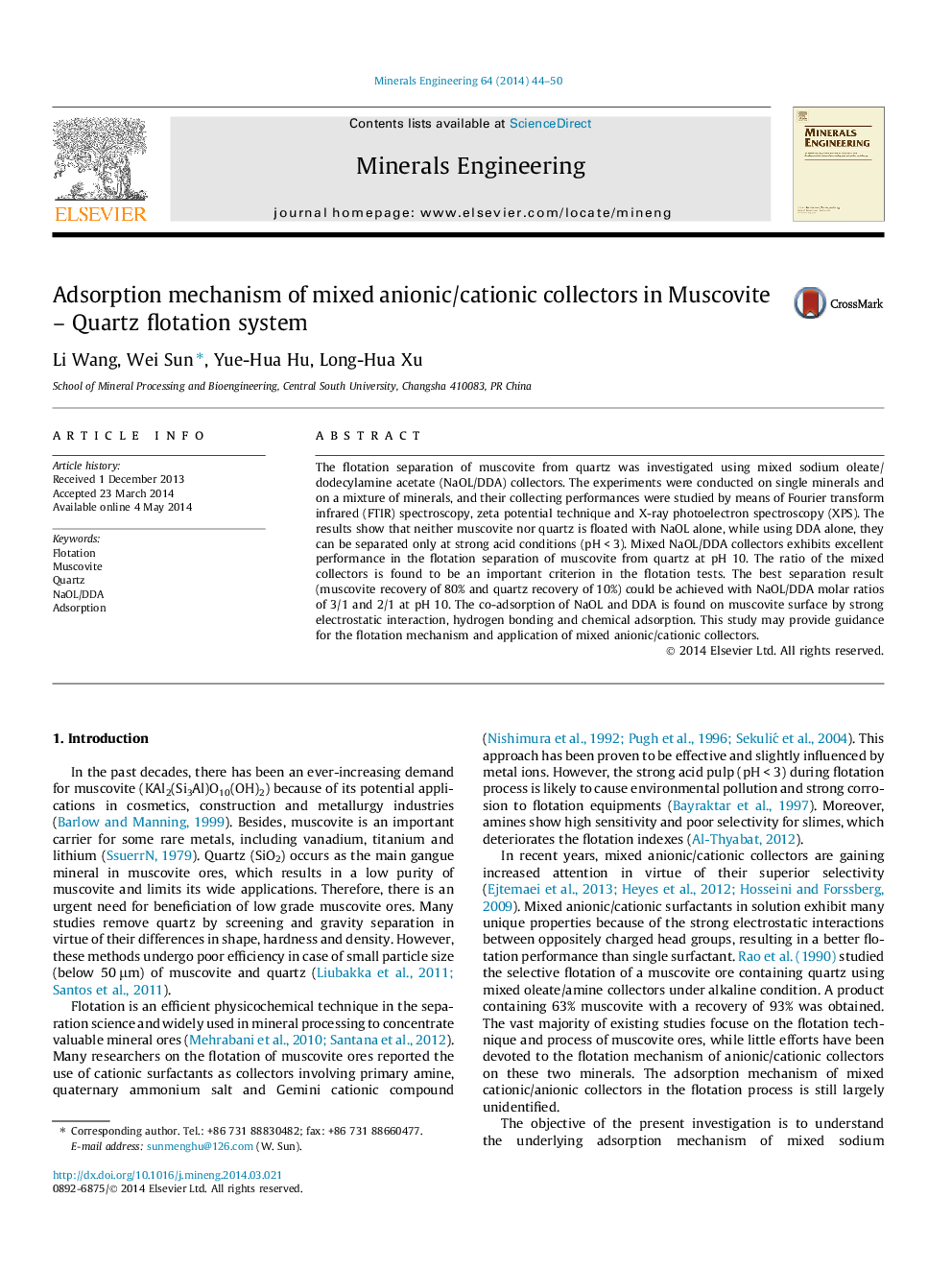| کد مقاله | کد نشریه | سال انتشار | مقاله انگلیسی | نسخه تمام متن |
|---|---|---|---|---|
| 233229 | 465329 | 2014 | 7 صفحه PDF | دانلود رایگان |

• Mixed collectors exhibit selectivity in flotation separation of muscovite from quartz.
• The ratio of the mixed collectors is an important criterion in the flotation tests.
• Adsorption mechanism of mixed collectors systems is studied.
• Mixed collectors absorb on muscovite by electrostatic and chemical adsorption.
The flotation separation of muscovite from quartz was investigated using mixed sodium oleate/dodecylamine acetate (NaOL/DDA) collectors. The experiments were conducted on single minerals and on a mixture of minerals, and their collecting performances were studied by means of Fourier transform infrared (FTIR) spectroscopy, zeta potential technique and X-ray photoelectron spectroscopy (XPS). The results show that neither muscovite nor quartz is floated with NaOL alone, while using DDA alone, they can be separated only at strong acid conditions (pH < 3). Mixed NaOL/DDA collectors exhibits excellent performance in the flotation separation of muscovite from quartz at pH 10. The ratio of the mixed collectors is found to be an important criterion in the flotation tests. The best separation result (muscovite recovery of 80% and quartz recovery of 10%) could be achieved with NaOL/DDA molar ratios of 3/1 and 2/1 at pH 10. The co-adsorption of NaOL and DDA is found on muscovite surface by strong electrostatic interaction, hydrogen bonding and chemical adsorption. This study may provide guidance for the flotation mechanism and application of mixed anionic/cationic collectors.
Journal: Minerals Engineering - Volume 64, 1 October 2014, Pages 44–50